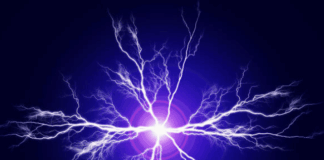You will never guess what Time magazine says is the cause of excess rain in Dubai. Quite amazing that they actually don’t deny weather manipulation and cloud seeding anymore, while still claiming chemtrails a conspiracy. What is the chance that this article was written by AI?
In a place as dry as the desert city of Dubai, whenever they can get rain, they’ll take it.
United Arab Emirates authorities will often even try to make it rain—as they did earlier this week when the National Center of Meteorology dispatched planes to inject chemicals into the clouds to try to coax some showering.
But this time they got much more than they wanted. Dubai faced torrential downpours on Tuesday, with flooding shutting down much of the city, including schools and its major airport—killing at least one man whose car was swept away as well as at least 18 others in neighboring Oman, including a bus full of schoolchildren.
The UAE government media office said it was the heaviest rainfall recorded in 75 years and called it “an exceptional event.” More than a typical year’s worth of water was dumped on the country in a single day.
Now, many people are pointing a finger at the “cloud seeding” operations preceding the precipitation.
“Do you think the Dubai floods might have something to do with this?” popular social media account Wide Awake Media asked on X, alongside a clip of a news report on the UAE’s weather modification program.
But experts say that while cloud seeding may have enhanced the rainfall, pinning such a devastating downpour on it is misguided.
“It is very unlikely that cloud seeding would cause a flood,” Roslyn Prinsley, the head of disaster solutions at the Australian National University Institute for Climate, Energy and Disaster Solutions, tells TIME, describing such claims as “conspiracy theories.”
It’s not the first time cloud seeding has been blamed for floods—in Dubai and around the world. In February, social media users charged officials working on a cloud seeding pilot program in California with causing storms that hit the state, despite the technology not even being used before the storms in question. And in Australia in 2022, as the nation down under experienced record rainfall, social media users recirculated an old news clip that questioned if there was a link between cloud seeding and flooding—to which fact-checkers answered: there isn’t.
Here’s what to know about cloud seeding, how and whether it even works, and what scientists say people should actually be worried about.
How does cloud seeding work?
Cloud seeding basically works by artificially recreating the process by which rain and snow naturally occur: In normal clouds, microscopic droplets of water vapor are attracted to atmospheric aerosols like dust or pollen or salt from the sea. When enough water droplets converge around these nuclei, they form ice crystals and fall.
Clouds are seeded, typically by specially equipped aircraft but also by ground-based generators, by implanting particles, commonly silver iodide, in and around selected clouds to act as nuclei and trigger the precipitation process.
Does cloud seeding even work?
Since the futuristic-sounding weather modification technique was introduced in the 1940s, it has been used regularly across the world, from the UAE to China to the United States, for a wide range of intended purposes. Mostly employed by governments grappling with drought, cloud seeding has even found itself a part of some of the biggest events in history, from clearing urban pollution and ensuring blue skies at the 2008 Beijing Olympics, to staving away Moscow-bound radioactive clouds in the wake of a nuclear disaster in Chernobyl, to hampering the movement of U.S. enemies during the war in Vietnam. (Weather modification in warfare has since been banned by the U.N.)
For decades, a rain-scarce UAE has invested heavily in cloud seeding, including granting permanent residency to experts, and funding research programs to better identify the seedability of clouds.
But the science on just how effective cloud seeding is remains inconclusive. In 2003, the U.S. National Research Council concluded that “there still is no convincing scientific proof” of its efficacy at the time. A landmark 2020 study, however, found that cloud seeding does work—but researchers are clear about its limitations.
UAE meteorological officials say that their cloud seeding operations can increase rainfall by 10-30%, while Californian authorities’ estimates for their own program sit at 5-10%. The Desert Research Institute (DRI), the state of Nevada’s research group, says cloud seeding can increase seasonal precipitation by about 10%, while the World Meteorological Organization assessed in 2019 that the impacts of cloud seeding range from next to nothing to 20%. And success in producing rain depends significantly on atmospheric conditions such as wind and cloud temperatures.
That’s why experts agree that cloud seeding tends to get a bad rap from the public. Its impact is often overstated, and while it can enhance rainfall, other natural and unnatural factors play a much greater role in causing floods.
Are there any concerns about cloud seeding?
A number of myths are associated with cloud seeding, such as that it causes what’s known as “chem-trails,” cloud-like streaks of white in the sky. DRI says those are actually “jet contrails, and they are the aviation equivalent of visible plumes of steamy breath on a cold morning.” They have “no connection with cloud-seeding activities.”
But there are other reasons for skepticism about cloud seeding.
Critics argue that seeding clouds in one region may simply deprive another of rain, as the clouds will unleash precipitation before they were meant to. (Iran has for years accused its neighbors of “stealing their rain.”)
Others have expressed health concerns about the chemicals used to seed clouds. Silver iodide, a common substance used, may be toxic to animals, though others insist it is safe.
In a publication for the Bulletin of Atomic Scientists, Laura Kuhl, a public policy professor at Northeastern University, argues that cloud seeding may do “more harm than good” due to these uncertainties and because, given its limited effectiveness, it promotes a sense of “techno-optimism” that “can obscure deeper structural drivers of vulnerability like unsustainable water use and unequal distribution of access to water.”
What’s to blame for floods?
The severity of the recent flooding in Dubai could be in large part because the perennially dry country hasn’t developed effective drainage infrastructure to deal with intense rainfall. But experts note that a major reason for such extreme weather events is climate change, since warmer air can hold more water, which then leads to heavier rainfall and floods in some areas.
“Climate change on top of natural weather and climate processes is the cause of much of the extreme weather that we are seeing across the world. Cloud seeding is used to make recalcitrant clouds produce some rain,” she says. “The thunderstorms themselves are much more likely to have caused the extreme flooding in Dubai due to climate change-fuelled intense rainfall—as is happening across the world.”
From Time Magazine
Disclaimer: We at Prepare for Change (PFC) bring you information that is not offered by the mainstream news, and therefore may seem controversial. The opinions, views, statements, and/or information we present are not necessarily promoted, endorsed, espoused, or agreed to by Prepare for Change, its leadership Council, members, those who work with PFC, or those who read its content. However, they are hopefully provocative. Please use discernment! Use logical thinking, your own intuition and your own connection with Source, Spirit and Natural Laws to help you determine what is true and what is not. By sharing information and seeding dialogue, it is our goal to raise consciousness and awareness of higher truths to free us from enslavement of the matrix in this material realm.
 EN
EN FR
FR



























check "The Dimming" documentary – Chem-Trails short for "Chemical toxic murder by design death dumping concentrate Trails. All ailment antigenetics industrial chemistry at its best to intoxicate and destroy human dna an gnome. short for full on man made weather warfare weapons of mass destruction yes can cause floods all sorts of weather condition. Computer controlled push dee-button set it forget it. Blame it on mother nature as the force unseen as the all go off to the banks and see their pouches grow.
Jet con-trails are the words by ones whom master the deception and manipulative lies to seed into your brain so that you ignore them whilst they slowly little by little of its daily every breath counts dosage in to the body. Not directly affecting the higher immune until its systems start to depreciate by long term accumulations adding up!, thinking that is not just a cough or a cold on set. 'then its too late'. For others with hyper sensitive immune systems are immediately affected with all ailements eye ear throat. sinus all symptom, polyps fungal infection lung diseases asthma chronic bronchitis etc etc etc and 1000x down the all ailment "Con trail did you say".
With again who looks up anyways the in place hand to eye distractions the eco systems are pretty much at or past point of no return. Who goes into the forests and bush lands to notice nothing is as much the living. Trees dissolving at the very fiber they live by. Learn the truth for he/her to whom knows the truth let such set one free.
least to think of its own accord whilst the chemistry finalizes its death blow. then the free comes after.
death that is.
"Chem-trails are … actually jet con-trails". Yeah, right.
And "What's to blame for floods? … Climate change", of course, at least according to fakestream-media Time Magazine et al.
Fakestream-"science" propaganda at its worst.